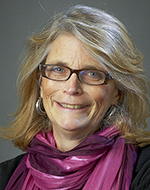Page Content

… the only thing more expensive than investing in education is not investing in education. Inadequate education produces high costs for society in terms of public spending, crime, health, and economic growth.
Global Economic Symposium
|
The health and strength of Canadian society depend on the health and strength of our public education system(s).
Our economy, our environment, our overall prosperity all depend on our next generations. And if we want to thrive — both as a country (or province or community) and as individuals — then there’s a lot riding on our schools and our teachers.
I don’t think it’s an exaggeration to say that the world is a bit of a mess right now. And when you talk to young people, many of them are struggling to find hope. They’re worried they won’t get jobs, that they won’t be able to afford a good place to live and that we are destroying the planet — just to name a few of their worries.
Many of the responses to these challenges lie in our schools, which is why there is actually hope for the future, and why teaching is the most important job in the world.
Teachers’ jobs are the most important because they are responsible, along with families, for “building” the next generations of society, and everything depends on how our children turn out — for each of them individually, and for all of us collectively.
We live in a world of growing polarization, at a time some refer to as the “post-truth” era, and one in which we seem incapable of ensuring a healthy economy alongside an environmentally sustainable one. The gap between the rich and everyone else continues to increase, young people are struggling to maintain their mental health, the permafrost is melting, growing numbers of species are becoming extinct, and millions of refugees are fleeing war, fundamentalism and various forms of deprivation.
The one place we can have an impact on all those things is in our schools.
In our schools we can teach students how to differentiate between fact and fiction, we can teach them how to not get along (as citizenship scholar and UNB professor Alan Sears puts it), and we can teach them to persist in the face of complex problems, opposition and failure. Maybe more important than anything else, we can teach them how to keep on learning.
And that’s where the hope lies.
It’s not all about the economic benefit, but it’s not a bad place to start
It costs about $12,000 a year to educate a child in most Canadian provinces. According to Nobel laureate James Heckman, we make back 10 times that amount in the long run. He says investing in children and young people results in “increased productivity, higher income, better health, more family investment, upward mobility, and reduced social costs.”
In Canada right now, when the public is polled about which concerns are top of mind, they put jobs, the economy, health care and the environment (and sometimes government itself) at the top of the list. The question then becomes, how do we get better at connecting the dots between those issues and public education? How do we get better at communicating the long-term societal value of investing in our schools?
There is hope, and it lies in our publicly funded schools
First, we need to be clear that this is not a time for our schools to go “back to” anything. In fact, it’s time to focus on the new basics — the competencies and skills that young people need to thrive in a rapidly changing world. By doing that, our schools can help to improve the overall economy, prepare young people for jobs that don’t yet exist, educate a generation with the imagination and problem-solving skills required to address climate change, and even reduce health-care costs.
We are incredibly lucky to live in a country that supports public education (though we have to be careful not to take it for granted), and where nearly all of our kids go to publicly funded schools. We have to get better at communicating the impact of this amazing public asset.
The evidence is clear — there is no better investment we can make than investing in students’ opportunities to learn, in our teachers and in the evolution of the system itself. The world is changing quickly, and within the structure of public education lies the hope for our future. ❚
Annie Kidder is executive director of People for Education, a Toronto-based organization that creates evidence, instigates dialogue and builds links so that people can see and act on the connection between public education and a fair and prosperous society.
